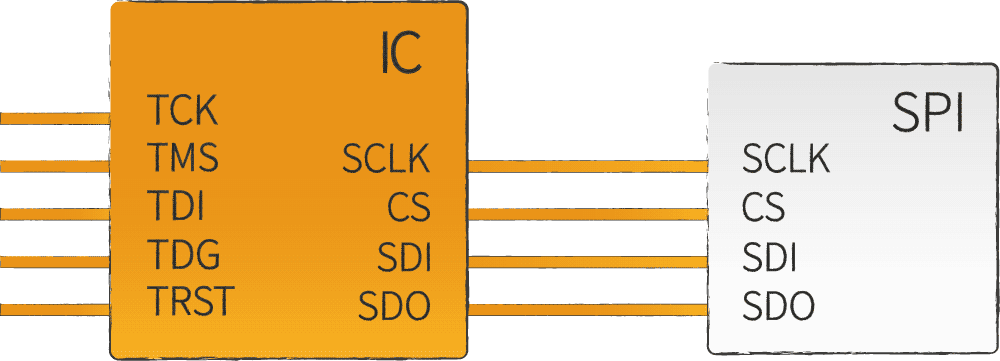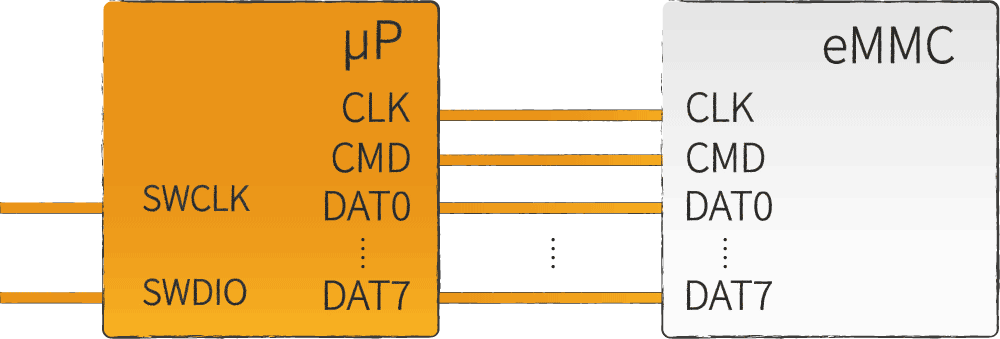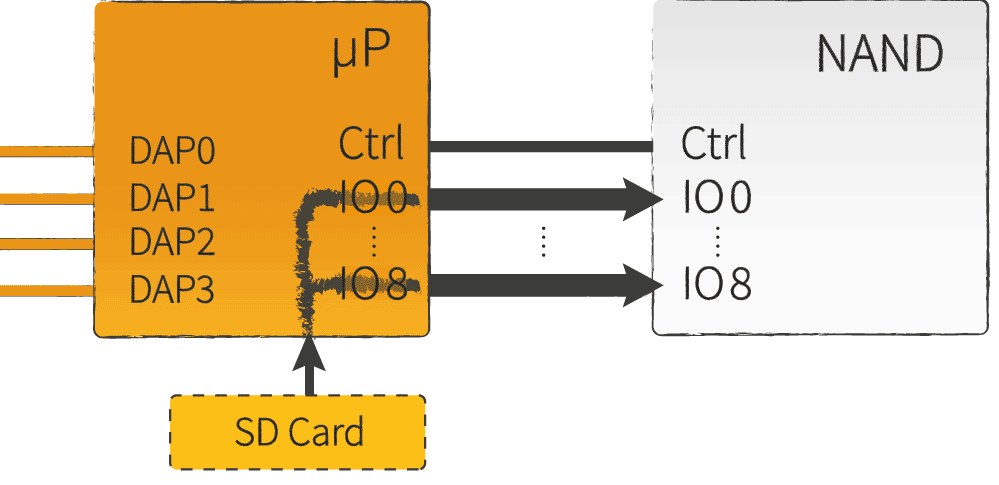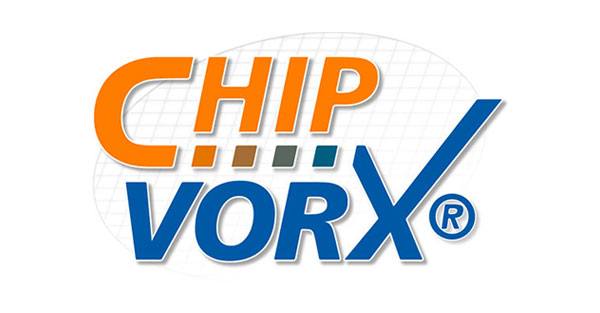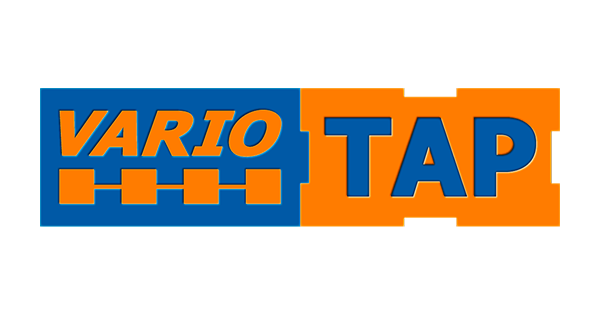Embedded Programming
Programming serial Flash devices (I²C, SPI) or parallel Flashes (NOR, NAND)
The idea behind Embedded Programming is to offer one solution for all programming requirements of modern electronics using already available on-board resources – whether used in development or in production. A universal programming system today must support several scenarios. On-board programming distinguishes between the programming of serial Flash devices (I²C, SPI) and the programming of parallel Flashes (NOR, NAND). In addition, more and more data must be written into on-chip Flash memory. This often involves processors, controllers, or FPGAs. Users in production are encountering increasing demand to carry out these programming requirements in parallel on several boards.
The Embedded Programming solution implements all these requirements in one system.
The hardware and software used in this process is so flexible that the user can adapt the system at any time. This makes it possible to easily meet the requirements for smaller or larger batches, shorter cycle times, etc.

Programming of serial Flash components (I²C, SPI) or parallel Flashes
Depending on the application, there are various possibilities for this, which we summarise under the term Embedded Programming. From the programming of serial numbers and production data to the loading of entire firmware packages, there are extremely different requirements for data throughput. The idea behind Embedded Programming is therefore to offer a solution for all programming requirements of modern electronics - regardless of whether they are used in development or in production. Today, a universal programming system must support several scenarios; in on-board programming, a further distinction is made between programming serial flash devices (I²C, SPI) and programming parallel flashes (NOR, NAND). In production, these programming requirements often need to be performed parallel on several boards.
JTAG/Boundary Scan an be useful if you only want to programme small amounts of data or do not have any special requirements for the test duration. Higher data sizes or lower test periods may work better woth alternative access technologies such as VarioTAP . In contrast to the simple JTAG/Boundary Scan, no serial shifting chain is used for data transfer. This allows you to achieve significantly higher programming speeds. The choice of the right technology therefore depends entirely on the programming speed you require and the element to be programmed.
By providing embedded programming, structural test and function test are included within one holistic suite of tools.
The hardware and software is so flexible that the user can adapt the system at any time. For example, requirements for smaller or larger quantities, short cycle times and much more can be easily met.
Example applications with Embedded Programming
Depending on the target application Embedded Programming manages either the JTAG interface with
TCK (Test ClocK),
TMS (Test Mode Select),
TDI (Test Data Input),
TDO (Test Data Output),
TRST (Test ReSeT)
or another debug interface.
Webcast Downlaod
Jetzt registrieren und den aktuellen Webcast anschauen!
"On-Board Programming"
Von der Platine bis zum fertigen Automotive-Steuergerät
(vom 14. Mai 2020)

 Demande
Demande

